What are Minerals?
In a previous article, we looked at elements, the building blocks of minerals: A mineral is made up of one or more elements. There are 88 naturally occurring elements found in nature, yet only 38 elements make up the approximately 3,800 known minerals. Of these known minerals, many have numerous variations in crystalline structure and color, only adding to the endless variety found in the mineral world.
What Makes A Mineral A Mineral
What classifies an element or compounds of elements as a mineral? If the following criteria are met, then you have a mineral:
1. A mineral is solid. If a substance is currently in a liquid state (like water) or gaseous state then it is not a mineral. When a substance is solid (like ice) then it is considered a mineral. That should give you a new perspective on your ice-maker . . .
2. A mineral is naturally occurring. Simple enough – a mineral is formed through natural geological processes, whereas man-made substances such as lab-grown gems and synthetic gems are not considered minerals.
3. Minerals are inorganic substances. They are not living organisms and never were alive.
4. Minerals have a specific, predictable chemical composition. Take the mineral Galena for example – Galena’s chemical makeup is PbS, lead sulfide. Always. A rock, however, can be a varying aggregate of minerals. Granite, for example, although it must have at least a 20% presence of Quartz to be defined as granite, can be found to be white, pink, black, red, or many other color varieties depending on the combination of minerals found in its composition. Yet all of these variations are still defined as granite. Minerals can also have various colors depending on inclusions, yet their chemical composition remains unchanged.
5. Minerals have an ordered crystalline structure. To be more precise, countless atoms connect in a repeating, orderly three-dimensional pattern.
Minerals are solid and inorganic, occur naturally, have a specific chemical composition and crystalline structure. But how do minerals differ from rocks? At first glance it may appear that’s quite a few similarities. In fact, rocks are also solid, inorganic and occur naturally. However, they do not have a specific chemical composition nor a crystalline structure. Just as the building blocks of minerals are elements, minerals are the building blocks of rocks, since rocks are an aggregate of various minerals. Granite, for example, contains varying amounts of the minerals Feldspar and Quartz, and may or may not include Biotite, Amphibole, Muscovite and/or Pyroxene. Any of these combinations makes for the rock Granite. The aggregate/combination makes for a rock, not a specific chemical composition.
What Are Rocks
There are three ways that two or more minerals are combined to form rocks:
1. Igneous – When molten rock solidifies.
2. Sedimentary – When accumulations of weathered rock become compacted and cemented together.
3. Metamorphic – When existing igneous and sedimentary rocks are chemically and physically altered due to extreme temperatures and pressures.



The purpose of defining rocks (and in a different blog, elements) is to further define what minerals are and the role they play in physical geology. Rocks have invaluable roles in infrastructure, architecture, commercial and industry, but the reality is, there are no rocks without minerals. And yet there are rocks that are aesthetic, even collectable. But honestly, minerals steal the show. There’s just no comparison.
Mineral Groups
Now that we have a better understanding and delineation between elements, minerals and rocks, let’s take a deeper dive into minerals and break them down into categories or groups. All minerals are classified into one of eight groups. They are as follows:
Oxides: These minerals include those in which oxygen is combined with one or more metals as a result of the abundance of oxygen in the Earth’s crust. These minerals vary in hardness from 5 to 9 and the colors range the full spectrum, including black. The oxides include ores of iron, chromium, manganese, tin and aluminum. Examples: Corundum ( aluminum oxide Al₂O₃), Hematite (iron oxide Fe₂O₃), water ice (H₂O). Some of the collectable oxides include Anatase, Corundum, Cuprite, Hematite, Rutile and Spinel.
Sulphides: These minerals include those in which sulfur is combined with one or more metals. Most sulfides have well formed crystals, exhibit metallic luster, have low hardness, exhibit electrical conductivity and have black or dark streaks. Examples: Galena (lead sulphide PbS), Pyrite (iron sulphide FeS₂), Chalcopyrite (copper-iron sulphide CuFeS₂). The sulphides include ore minerals for iron, copper nickel, lead, cobalt, zinc, and silver. Some of the collectable sulphides include Acanthite, Galena, Pyrite, Sphalerite, Stibnite,
Sulphates: These minerals include those in which SO₄ (oxidized sulfur) combines with metals. Sulphates have a vitreous luster, have a hardness between 4-6, usually translucent, and form in veins and oxidation zones. Examples: Gypsum (calcium sulphate CaSO₄·H₂₀), Barite (barium sulphate BaSO₄). Some of the collectable sulphates include Barite, Brochantite, Celestite, Creedite, Crocoite, Gypsum and Wulfenite.
Halides: These minerals include those in which the halogen elements (chlorine, bromine, fluorine and iodine) are combined with one or more metals. Halides have a relatively low hardness, are usually translucent to transparent, have good cleavage, colors range the full spectrum, and have well formed crystals. Examples: Fluorite (calcium fluoride CaF₂), Halite (sodium chloride NaCl), Atacamite (copper chloride hydroxide Cu₂Cl(OH)₃). Most halides are rare with the two notable exceptions being Halite (salt) and Fluorite, with Fluorite being one of the most collectable and colorful of all the minerals.
Carbonates: These minerals are those that contain the carbonate ion (carbon + oxygen) CO₃. The carbonates are the most widely distributed minerals throughout the Earth’s crust. Examples: Calcite (calcium carbonate CaCO₃), Dolomite (calcium-magnesium carbonate (Ca,Mg)CO₃), Malachite (Cu₂CO₃(OH)₂). Carbonates contain some of the more popular collectable minerals, including Aragonite, Azurite, Calcite, Malachite, Rhodochrosite and Smithsonite.
Phosphates: These minerals are those that contain phosphate (oxidized phosphorus PO₄). Phosphates typically have an average hardness from 4-7 and are often strongly colored with a vitreous to dull luster. Examples: Apatite (Ca₅(PO₄)₃(OG)), Turquoise (CuAl₆(PO₄)₄(OH)₈·5H₂O), Pyromorphite (Pb₅(PO₄)₃CL). As you can see, this class can have some very complex chemical structures. Although this mineral class is very large with almost 700 known species, many are rare. One of the most abundant phosphates is Apatite, but for collectors, the list also includes Pyromorphite, Vanadinite, Purpurite, Vivianite, and Wavellite to name a few.
Silicates: These minerals are those whose structure contains silicon-oxygen tetrahedrons (SiO₄) arranged and linked together in a variety of ways. The silicate mineral class is the most prominent and important mineral class. Approximately 25% of the known minerals are Silicates and almost 40% of the common minerals are also silicates. Nearly 90% of the igneous rock-forming minerals are silicates, which by extension means they make up over 90% of the earth’s crust (the other dominant mineral group is the oxides). Examples: Quartz (SiO₂), Feldspar (sodium-aluminum silicate NaAlSi₃O₈), Kyanite (Al₂SiO₅). Some of the numerous collectable Silicates include the Feldspar, Zeolite, Mica, Tourmaline and Garnet groups, Quartz, Epidote, Topaz, Hemimorphite, and many others.
Native minerals: These minerals are those that are composed of a single element and occur naturally in nature in a pure or uncombined form. Elements that are classified as minerals are Gold (Au), Diamond (C), Graphite (C), Sulphur (S), Copper (Cu).
Minerals Defined
Hopefully this initial information will help lay the framework for what defines a mineral, and how minerals are organized into groups for greater systematic study.
In another article we’ll look at how to identify minerals – most minerals can be characterized, classified and identified by their unique physical properties.



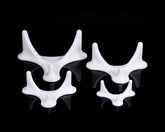
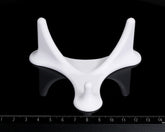
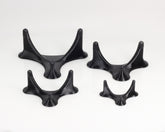

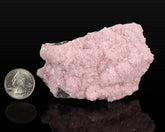
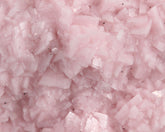
Leave a comment
Please note, comments need to be approved before they are published.